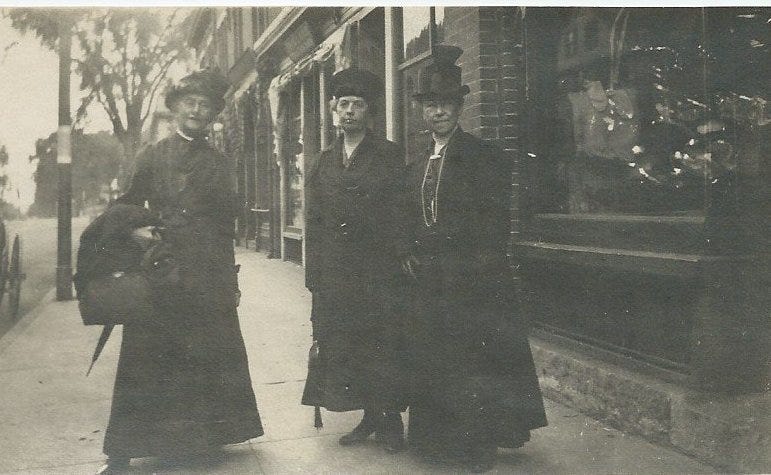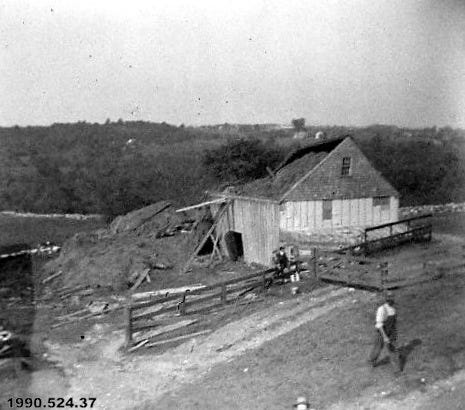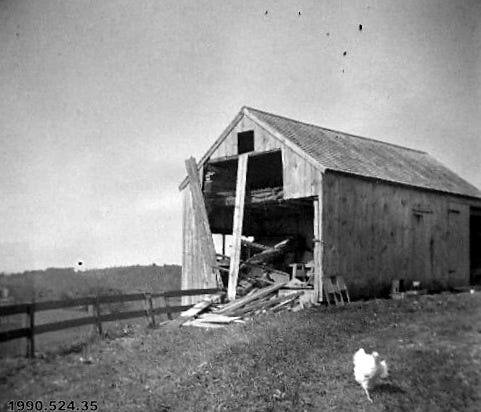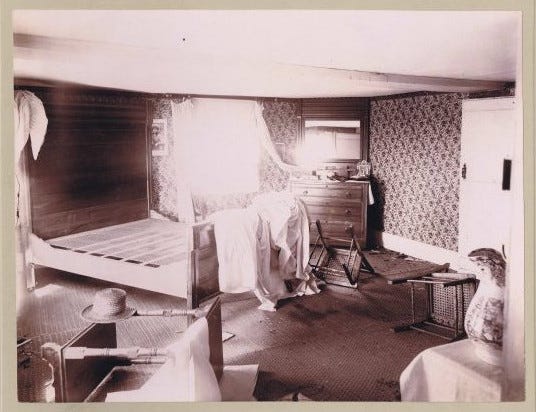1898 was not a pleasant year for weather, but it's a good one to talk about 123 years later! Just six months after one of the worst blizzards in the town’s history, Andover faced a cyclone of a rare magnitude.
Once a tropical cyclone reaches maximum sustained winds of 74 miles per hour or higher, it is classified as a hurricane, typhoon, or tropical cyclone, depending upon where the storm originates. In the North Atlantic, central North Pacific, and eastern North Pacific, the term hurricane is used. The 1898 storm was described as a "cyclone" at the time, so we kept it for this story.
The summer of 1898 saw one of the longest stretches of heat and humidity in recent memory. The air was hot and clammy, and in August precipitation was imminent. Despite the warning, the sudden arrival of a severe storm caught officials off-guard.
The storm fell in two waves. The first arrived Friday, August 19th.
Sewer systems flooded, pipes burst, dirt roads washed out, overwhelming the Street Commissioner...the same Street Commissioner who employed over 100 people to shovel snow following the blizzard six months prior.
The first wave had passed by Saturday, but the worst was yet to come days later.
That Tuesday, dark, ominous clouds approached once again and were over Andover after sunset.
Lightning illuminated the pitch-black night sky while bellows of thunder complimented the show. Andover residents took cover as windswept rain fell nearly parallel to the ground!
The Andover Townsman recorded the experience of Miss Sarah L. Sawyer, a farmer on the slopes of Holt Hill (Prospect Road).The cyclone reached its peak after dark, wreaking havoc on Miss Sawyer's property.
It was still dark when the storm subsided, but Edward H. Berry and Miss Sawyer's neighbors immediately came to her aid. One neighbor activated a fire alarm, but it didn’t work. The message spread by word of mouth and firemen and policemen soon joined the effort.
The morning revealed the extent of the damage to her estate.
The storm blew part of the roof of her house off and the entire roof plus half of the foundation of her barn. Debris from the barn buried as many as 31 cows and exposed 20 tons of hay to the elements, rendering it useless.
Some oddities included a pitchfork found 200 feet off and a coop with 40 hens 100 feet from its foundation. Smashed windows allowed a suitcase to make its way from one room of the house to another.
Adding to her misfortune, Miss Sawyer had no insurance. Damages cost her several thousand dollars.
We today could only imagine how upset she must have been, but the Townsman noted the following:
“Miss Sawyer takes her misfortune philosophically. The same spirit which made her farming venture successful animates her in the face of the loss of her many years of hard labor.”

Shortly after the storm, carpenters removed the debris and began construction of a new barn.
Miss Sawyer had purchased the house and farm at 89 Prospect Road from the Holt family in 1883. She sold the property in 1902. The home and new barn remain private, but are a feature of the Ward Reservation.
The following photographs of cyclone damage were given to the History Center by Miss Sawyer's niece in 1942.
Which New England hurricane made an impression on you?













BTW, that is NOT the Nicholas Holt (1) house but the Timothy Holt (3) house, built in 1714.
Interesting photo ACHC # 1942.039.4 which illustrated how the Holts altered the original 1714 steep saltbox roof line by raising it to accommodate later generations..